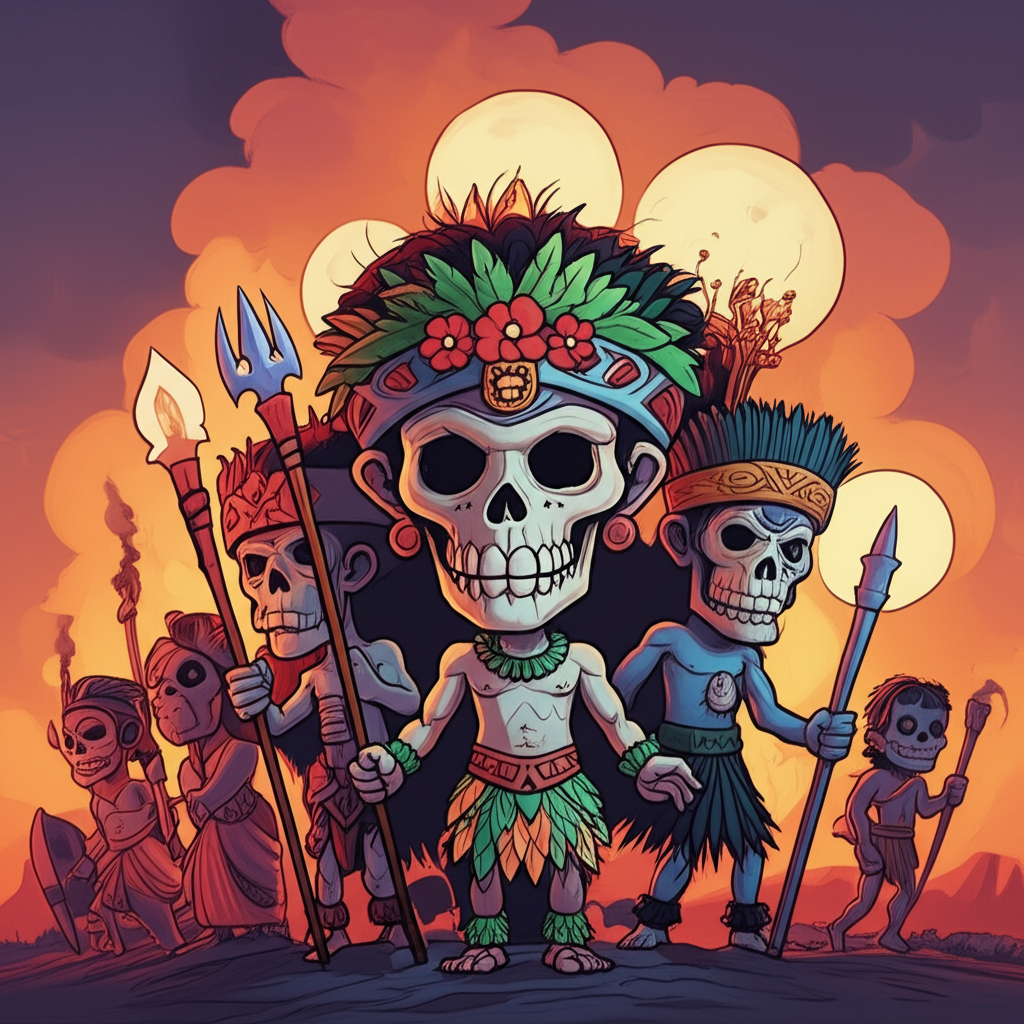
The winds whisper tales across the verdant slopes of Maui, carrying with them stories woven from the very fabric of time. These are not tales of everyday life, but ancient narratives passed down through generations, a cultural inheritance from the Polynesian people who first charted these islands. Among these captivating legends, none resonate with quite the same mystique as the story of the Huakaʻi Pō, the Night Marchers. This is a traditional story, a product of the fertile imagination of ancient Hawaiians, offering a glimpse into their worldview and their deep connection to the powerful forces of nature.
The genesis of such legends lies in a time when the world felt both more immediate and more mysterious. In the eras before modern science, the dramatic landscapes of Hawaiʻi – particularly its towering volcanoes, dormant and active – were not merely geological formations but living, breathing entities, imbued with potent spirits. The ancient Hawaiian society was deeply intertwined with the natural world. Their understanding of life, death, and the cosmos was shaped by the rhythmic pulse of the ocean, the fiery heart of the volcanoes, and the ever-present influence of ancestral spirits. They saw the world as a complex tapestry where the physical and spiritual realms were in constant dialogue, and the unseen forces played a significant role in the lives of mortals. In this context, the Night Marchers emerged as a potent symbol, an embodiment of the unseen power that permeated their existence.
The figures described in the legend of the Night Marchers are often depicted as a spectral army, a procession of ancient warriors. They are said to march in the darkness, their forms sometimes visible as shimmering outlines or faint glows, other times merely announced by the chilling sound of their footsteps and the clash of unseen weapons. These are not benevolent spirits; their presence is a solemn and often terrifying omen. They are often associated with the ancient aliʻi (chiefs) and their warriors, men of great power and influence in life, whose spirits, it was believed, continued their earthly duties in the afterlife. The symbolic attributes of the Night Marchers speak to the ancient Hawaiian reverence for lineage, power, and the enduring impact of their ancestors. Their marching, a disciplined and relentless movement, could represent the continuity of leadership, the inescapable weight of history, or the potential for unseen judgment. The phantom glow might symbolize their spiritual essence, a reminder that even in death, significant figures left an indelible mark.
The narrative of the Night Marchers unfolds in the hushed hours after sunset, when the veil between the worlds is said to thin. Imagine a moonless night on Maui, the air thick with the scent of plumeria and damp earth. The gentle murmur of the ocean might suddenly be overshadowed by a low, rhythmic pounding, growing steadily louder. This is the sound of the Huakaʻi Pō approaching. According to the stories, they march along ancient pathways, often the same routes traversed by their living counterparts in times of war or ceremony. Their spectral ranks are said to be led by distinguished chiefs, their faces illuminated by an eerie, otherworldly light. Some accounts speak of them carrying torches, their flames burning with an unnatural hue. The air around them is described as frigid, and the ground may tremble slightly beneath their phantom tread.
The crucial element of the legend, and the part that instilled the greatest caution in those who heard it, is what one should do – or rather, not do – if one encounters the Night Marchers. The stories unequivocally state that seeing them is a grave matter. One must never stand in their path. The prescribed action is to immediately lie down, face down, and cover one’s head, becoming as small and inconspicuous as possible. To look directly at them, to stand tall and challenge their passage, was to invite disaster. Some tales warn of those who were struck down, spirited away, or simply vanished, their mortal lives extinguished by the potent energies of the spectral army. The march is not a casual stroll; it is a purposeful, unyielding advance, and any obstruction is met with dire consequences. The narrative emphasizes the absolute power of these spectral entities and the vulnerability of mortals in their presence.
The symbolism embedded within the Night Marchers legend is rich and multifaceted. Primarily, it can be seen as a powerful personification of the awe and fear inspired by the volcanoes themselves. The rumbling of the earth, the fiery eruptions, the very power of these geological giants could easily be interpreted as the actions of a formidable, otherworldly force. The Night Marchers might have represented the primal energies of the earth, a constant reminder of nature’s untamed might and the respect it demanded. Furthermore, the legend served as a potent tool for social control and moral guidance. By instilling a deep-seated fear of disrespecting these spectral ancestors or their pathways, elders could encourage obedience and discourage actions that might disturb the established order. The unwavering march of the Night Marchers could also symbolize the inevitability of fate or the enduring legacy of significant individuals, a reminder that actions, both good and bad, could have repercussions that extended beyond a single lifetime. It was a narrative that underscored the importance of living a life that would earn the respect, or at least the neutrality, of the ancestral spirits.
In the modern era, the echoes of the Night Marchers resonate in various forms of creative expression. They have been featured in literature, often as elements of suspense and supernatural mystery. In video games, their spectral nature and the element of stealth required to avoid them lend themselves to exciting gameplay mechanics. Popular culture often draws upon these ancient myths to imbue stories with a sense of cultural depth and an eerie allure. Beyond entertainment, these legends are studied by anthropologists and cultural historians as invaluable windows into the beliefs, anxieties, and societal structures of ancient Hawaiian civilization. They are seen not as literal accounts, but as rich metaphors that illuminate a people’s relationship with their environment and their understanding of the spiritual realm.
It is crucial to reiterate that the story of the Night Marchers is a traditional narrative, a product of ancient storytelling and cultural interpretation. As Muslims, we understand that the true Creator and Sustainer of all existence is Allah (God) alone. These ancient myths, while fascinating and culturally significant, are not to be interpreted as divine truths or objects of worship. Instead, we can appreciate them as testament to the enduring power of human imagination, the deep connection ancient peoples felt with their surroundings, and the rich tapestry of cultural heritage that storytelling provides. The legend of the Night Marchers, like countless other myths from around the world, serves as a powerful reminder of our shared human capacity for wonder, for storytelling, and for seeking meaning in the world around us. They are echoes from the past, inviting us to explore different ways of understanding the world, while grounding ourselves in the knowledge of the One True God.





